Glossary of Cheese Terms
Contents
- 1 Glossary of Cheese Terms
- 2 Cheese Terms – Listed Alphabetically
- 2.1 Acid Set
- 2.2 Acidification
- 2.3 Acidity
- 2.4 Affinage
- 2.5 Affineur
- 2.6 Aging
- 2.7 Annatto
- 2.8 Artisanal
- 2.9 Asadero Cheese
- 2.10 Bloomy Rind
- 2.11 Brine
- 2.12 Brushed Rind
- 2.13 Buttery
- 2.14 Calcium Phosphate
- 2.15 Casein
- 2.16 Caseophile
- 2.17 Cheddar
- 2.18 Cheddaring
- 2.19 Cheesemonger
- 2.20 Chihuahua Cheese
- 2.21 Closed Curd
- 2.22 Coagulation
- 2.23 Cotija
- 2.24 Creamy
- 2.25 Crumbly
- 2.26 Cultures
- 2.27 Curdling
- 2.28 Curds
- 2.29 Curing
- 2.30 DO Denominacio de Origen
- 2.31 DOC Denominacao de Origem Controlada
- 2.32 DO Denominazione di Origine Protetta
- 2.33 Double Cream
- 2.34 Dry
- 2.35 Drying
- 2.36 Dry Matter
- 2.37 Earthy
- 2.38 Farmstead
- 2.39 Fat Content
- 2.40 Fresh Cheese
- 2.41 Friable
- 2.42 Fromage
- 2.43 Gamey
- 2.44 Gouda
- 2.45 Harp
- 2.46 Hoops
- 2.47 Lactase
- 2.48 Lactic Acid
- 2.49 Lactic Set
- 2.50 Lactose
- 2.51 Manchego
- 2.52 Mealy
- 2.53 Mennonite Cheese
- 2.54 Microbial Rennet
- 2.55 Microflora
- 2.56 Milk Fat Content
- 2.57 Milling
- 2.58 Mineral
- 2.59 Mold
- 2.60 Nutty
- 2.61 Oaxaca Cheese
- 2.62 Open Curd
- 2.63 Organic
- 2.64 Panela Cheese
- 2.65 Pasta Filata
- 2.66 Paste
- 2.67 Pasteurization
- 2.68 Pasty
- 2.69 PDO Protected Designation of Origen
- 2.70 Penicillium Candidum
- 2.71 Penicillium Roquforti
- 2.72 PGI Protected Geographical Indication
- 2.73 Pliant
- 2.74 Pressing
- 2.75 Pressed Cheese
- 2.76 Quesillo
- 2.77 Queso
- 2.78 Queso Blanco
- 2.79 Queso Fresco
- 2.80 Rancidity
- 2.81 Raw Milk Cheese
- 2.82 Rennet (Animal)
- 2.83 Rennet (Vegetarian)
- 2.84 Rennet Set
- 2.85 Ricotta Salata
- 2.86 Rind
- 2.87 Ripe
- 2.88 Runny
- 2.89 Salting
- 2.90 Scalding
- 2.91 Semi-Hard
- 2.92 Semi-soft
- 2.93 Starter Culture
- 2.94 Soft-Ripened
- 2.95 Tangy
- 2.96 TSG Traditional Specialties Guaranteed
- 2.97 Terroir
- 2.98 Thermization or Thermalization
- 2.99 Triple Cream
- 2.100 Trompillo (Solanum elaeagnifolium)
- 2.101 Turophile
- 2.102 Ultra Pasteurization
- 2.103 Umami
- 2.104 US RDA
- 2.105 Vegetarian Cheese
- 2.106 Washed Curd
- 2.107 Washed Rind
- 2.108 Whey
- 2.109 Yeast
Welcome to the MexicoCheese.com Glossary of cheese terms, a comprehensive listing of terms and vocabulary you need to know while learning about Mexican cheese, Mexican food and cheesemaking in general.
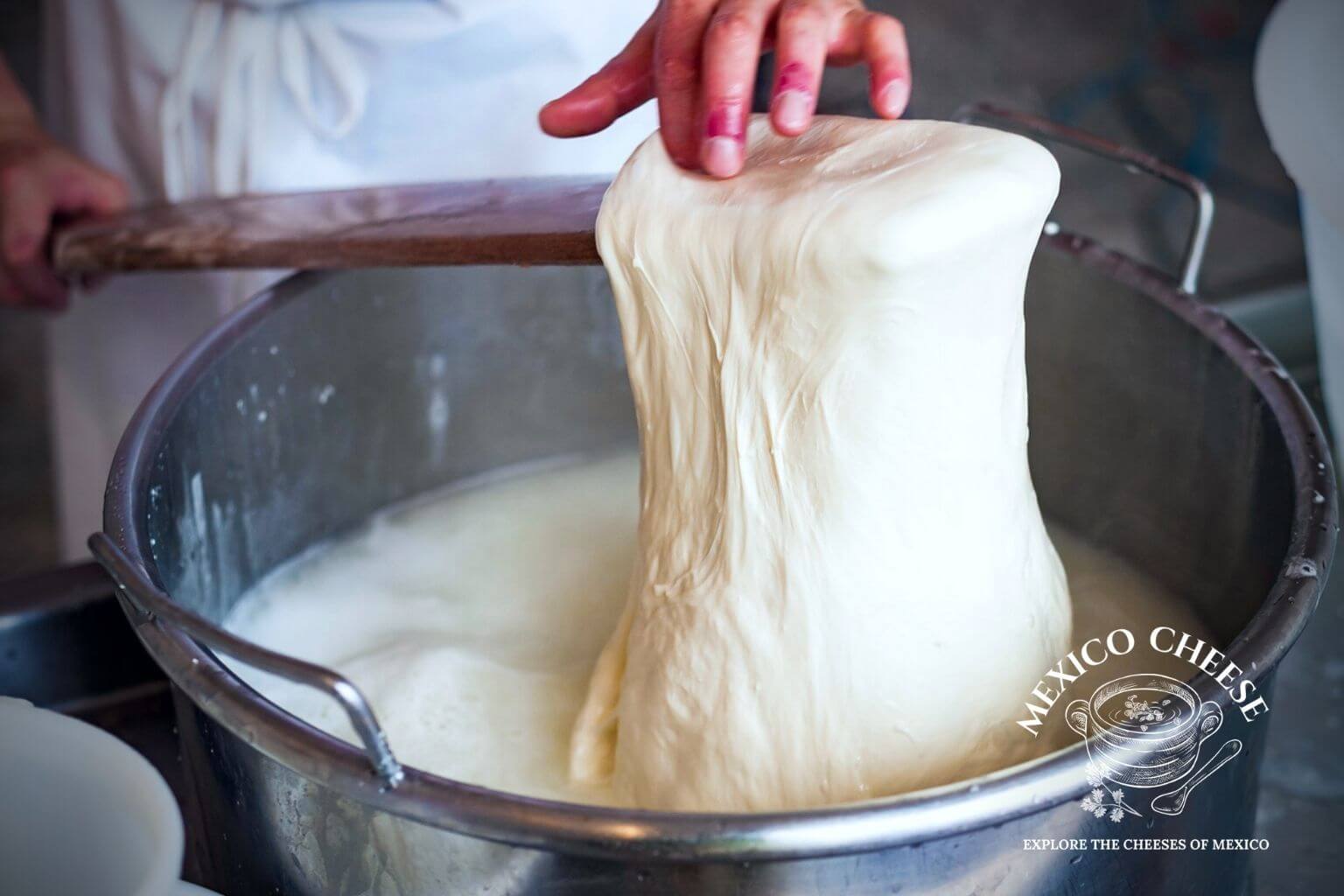
Cheese Terms – Listed Alphabetically
Acid Set
Acid set: Using bacteria in milk to coagulate the milk without the use of rennet. These cheeses have a softer curd because of the higher acidity causes calcium to drain from the whey. See also LACTIC SET
Acidification
Acidification: The initial step in souring milk. During acidification, lactose is converted into lactic acid.
Acidity
Acidity: Acidity is measured in pH units, the lower the pH, the more acid. Neutral is 7.0. Acidity (pH) is significant in making cheese because it influences the quality, texture and malleability of the curd, as well as acting as a preservative (more acid, less spoilage). High levels of acidity can provide crumbliness to cheese like Cotija. A cheese like Queso Oaxaca requires an exact pH level to be stretched.
Affinage
Affinage: French word for the aging or ripening of cheese.
Affineur
Affineur: French word for the expert who is responsible for aging/ripening and care of cheeses.
Aging
Aging: The aging or ripening process can last from a few days to a year or more. During the process of aging, the cheese loses moisture and develops a fuller, stronger flavor.
Annatto
Annatto: A reddish-yellow dye derived from the outer covering of the seed of the Annatto tree, found in Mexico, Central and South America. Annatto is generally tasteless and is added to cheese to turn the paste a butter yellow and to create an orangeish-reddish color in the rind.
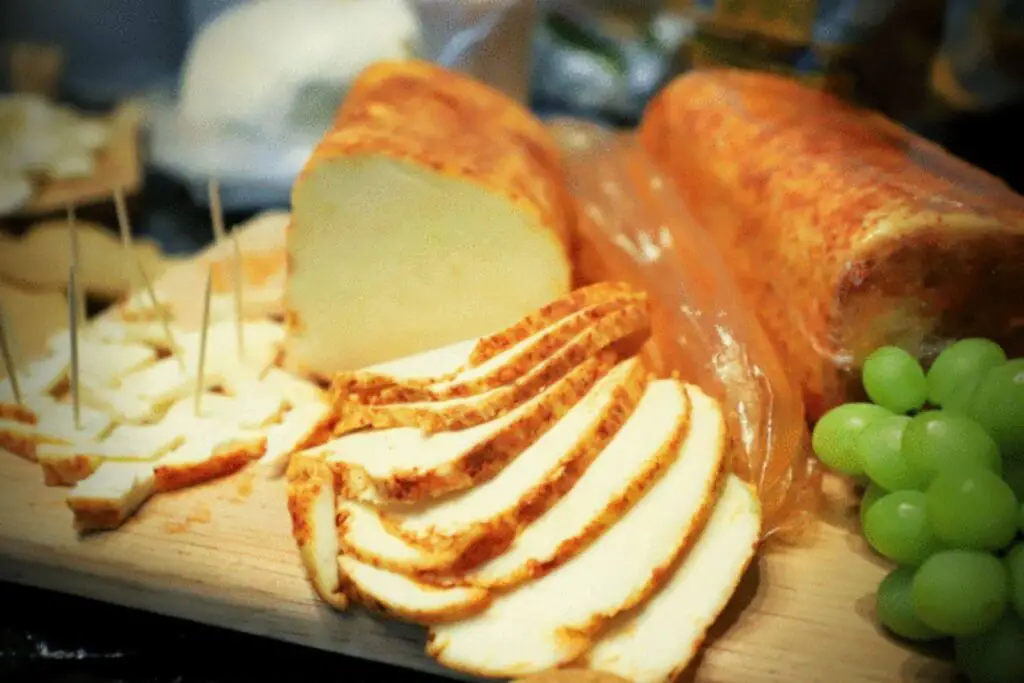
Artisanal
Artisanal: A cheese is considered artisanal if is made by hand, in small batches using traditional tools and techniques, with little to no mechanization involved. It may be made from milk produced by animals raised on the cheesemaker’s property (See FARMSTEAD), or it may be made from milk produced on nearby farms in the region.
Asadero Cheese
Asadero cheese: Read our full article about Queso Asadero here.
Bloomy Rind
Bloomy rind: Soft-ripened cheeses that have been treated with mold so that they ripen from the outside rind inwards will develop a bloomy rind. The thin crust or rind is white and appears velvety or fuzzy to the touch. While generally considered edible, many people choose not to eat the rind.
Brine
Brine: A solution to wash or cure cheese. Generally salt and water, but sometimes additional items might be added. Advances flavor and impedes mold growth. Some cheeses are stored in brine.
Brushed Rind
Brushed rind: A natural rind cheese is brushed in a process designed to keep mold from forming and to keep the interior paste or meat of the cheese moist.
Buttery
Buttery: A term that can refer to either the texture or the taste of the cheese. A buttery texture would describe a cheese that has the consistency and body of butter at room temperature. A buttery flavor describes a rich, cream-like flavor.
Calcium Phosphate
Calcium phosphate: The principal form of calcium found in cow’s milk.
Casein
Casein: Refers to the milk proteins which coagulate during the cheesemaking process into curds.
Caseophile
Caseophile: A cheese lover. Also known as a Turophile.
Cheddar
Cheddar: Refers to any cheese made by the traditional process known as “cheddaring”. Cheddaring means cutting curds into small pieces, cooking them, then stacking the cut pieces to allow the whey to drain.
Cheddaring
Cheese: A food consisting of the coagulated curd of milk separated from the whey. The remaining curds can then be pressed and aged according to a particular cheesemaking recipe, tradition or protocol.
Cheesemonger
Cheesemonger: Someone who specializes in selling cheese.
Chihuahua Cheese
Chihuahua cheese: See Also MENNONITE CHEESE. Read our full article here.
Closed Curd
Closed curd: Small, often milled or ground curds, packed together to create a more dense cheese with a creamy texture.
Coagulation
Coagulation: The separation of the curds from the whey in cheesemaking.
Cotija
Cotija: Read our full article about Cotija cheese here.
Creamy
Creamy: Both a texture and a flavor descriptor. Can denote both oozing, runny textures, and fresh cream flavors.
Crumbly
Crumbly: A texture descriptor. Describes consistencies that are comprised of or easily break into small fragments.

Cultures
Cultures: The combination of enzymes, microorganisms, bacterial or mold spores and other natural elements that become the profile recipes to develop flavor in cheese during the elaboration and aging process.
Curdling
Curdling: The process of coagulating milk with the introduction of an acid or rennet, which is an enzyme.
Curds
Curds: Coagulated milk protein.
Curing
Curing: Another word for maturing, ripening or aging.
DO Denominacio de Origen
DO: Denominacio de origen: Spain’s designation to protect specialty foods.
DOC Denominacao de Origem Controlada
DOC: Denominacao de origem controlada: Portugal’s designation to protect specialty foods.
DO Denominazione di Origine Protetta
DOP: Denominazione di origine protetta: Italy’s designation to protect specialty foods.
Double Cream
Double Cream: A soft cheese to which cream with a minimum butterfat content of 60% has been added. Double cream cheeses have a milk fat content of between 30% and 35%, and a moisture content of 50%.
Dry
Dry: Crumbly in texture. It may be considered a defect caused by too much rennet, curds cut too small or stirred too long; pH too low or humidity too low.
Drying
Drying: Dehydration of cheese surface to help form the rind.
Dry Matter
Dry Matter: All the components of cheese except the liquid which includes protein, fat, sugar and minerals.
Earthy
Earthy: A taste descriptor that often describes flavors of the rind which have been influenced by how the cheese is matured and reflecting these conditions, eg. of the cellar.
Farmstead
Farmstead: Cheese made by hand from milk produced by animals raised on the cheesemaker’s property.
Fat Content
Fat Content: An average fat content is 45%. Fat content can range from 4% to 75%.
Fresh Cheese
Fresh Cheese: Cheese that does not require again and is meant to be consumed as soon as it is made. Queso fresco, Queso blanco, Panela cheese and Requesón are examples of fresh Mexico cheeses.
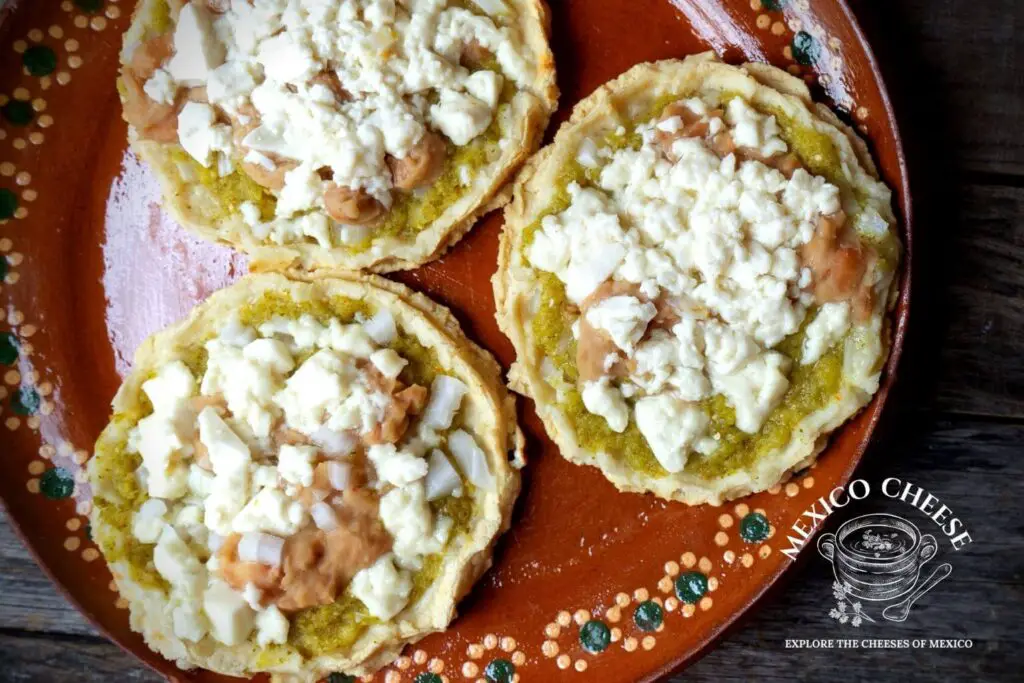
Friable
Friable: A texture descriptor, meaning easily crumbled.
Fromage
Fromage: The French word for cheese.
Gamey
Gamey: Refers to either the taste or aroma of cheese which strongly reflects its animal milk source. Young, fresh cheese should not have a gamey taste or aroma. But it can be perfectly acceptable and desirable for a more aged cheese to be described as gamey.
Gouda
Gouda: Gouda is a mild-flavored, yellow cow’s milk cheese originating from the Netherlands. It has a semi-hard texture and is characterized by its aromatic and caramel-like flavor combined with its dense and springy texture. It also has hints of nuts with notes of sweet cream.
Harp
Harp: A cheesemaking tool with cutting wires used to cut curds.
Hoops
Hoops: Molds used in the cheesemaking process to hold curds to allow additional drainage of whey.
Lactase
Lactase: An enzyme that breaks down the milk sugar, lactose.
Lactic Acid
Lactic Acid: The product of lactic bacteria breaking down lactose, making it easier for humans to digest. When the bacteria release the acid into milk, the acid aids coagulation.
Lactic Set
Lactic Set: Bacteria, either inherent in the milk or from starter cultures, convert the milk lactose to lactic acid, causing coagulation without the use of rennet. Lactic set cheeses develop a softer curd because the high acidity causes calcium to drain with the whey. Common Lactic set cheeses include cream cheese and cottage cheese. See also ACID SET.
Lactose
Lactose: The sugar found in milk.
Manchego
Manchego: Click here to read our full article about Manchego cheese.
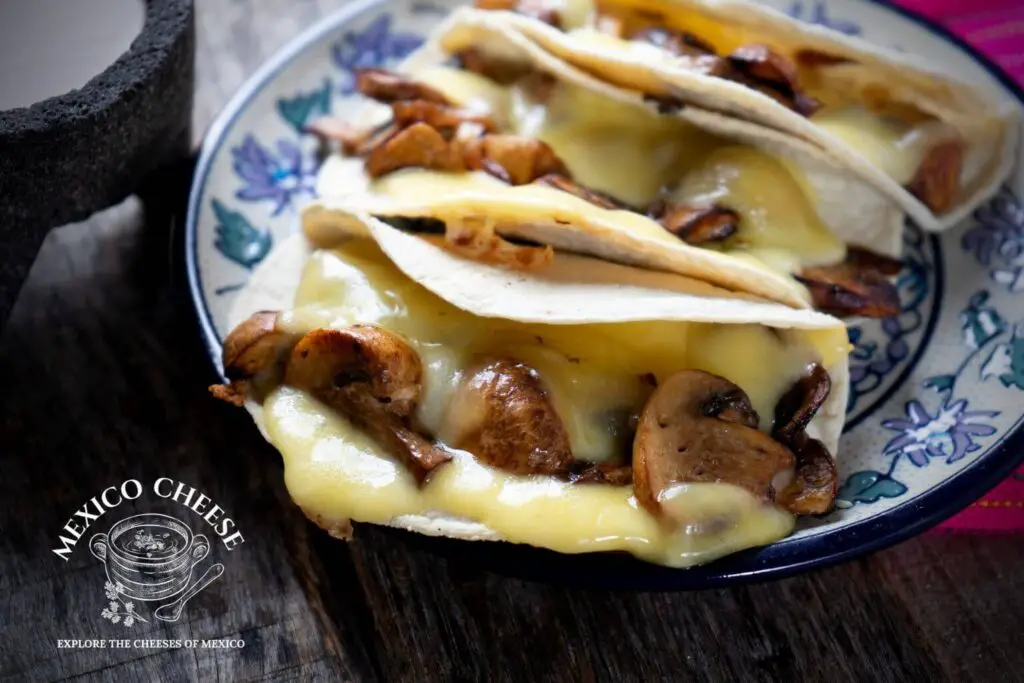
Mealy
Mealy: Grainy feel on the palate. May be caused by the formation of tyrosine and/or calcium lactate in the paste. Queso Chiapas is known to have a mealy texture.
Mennonite Cheese
Mennonite cheese: See Also CHIHUAHUA CHEESE. Read our full article here.
Microbial Rennet
Microbial rennet: Rennet created in a lab by growing mold. Generally considered “vegetarian suitable”.
Microflora
Microflora: The bacteria and yeast necessary for the ripening, flavor and rind development of cheese.
Milk Fat Content
Milk fat Content: The percentage of milk that is butterfat.
Milling
Milling: The mechanical process through which larger masses of curd are reduced to smaller pieces of curd, done to increase surface area and aid whey expulsion.
Mineral
Mineral: A taste descriptor used to describe flavors that denote cool, springwater-like or stony aromas.
Mold
Mold: A growth of minute fungi on vegetable or animal matter, commonly as a fuzzy covering. Ambient mold can also grow on the cheese naturally, either in the ripening room or any other non-sterile environment. Mold can be also inoculated into the cheese to promote bacteria growth.
Nutty
Nutty: Refers to having a flavor similar to that of hazelnut.
Oaxaca Cheese
Oaxaca Cheese: Read our full article about Queso Oaxaca
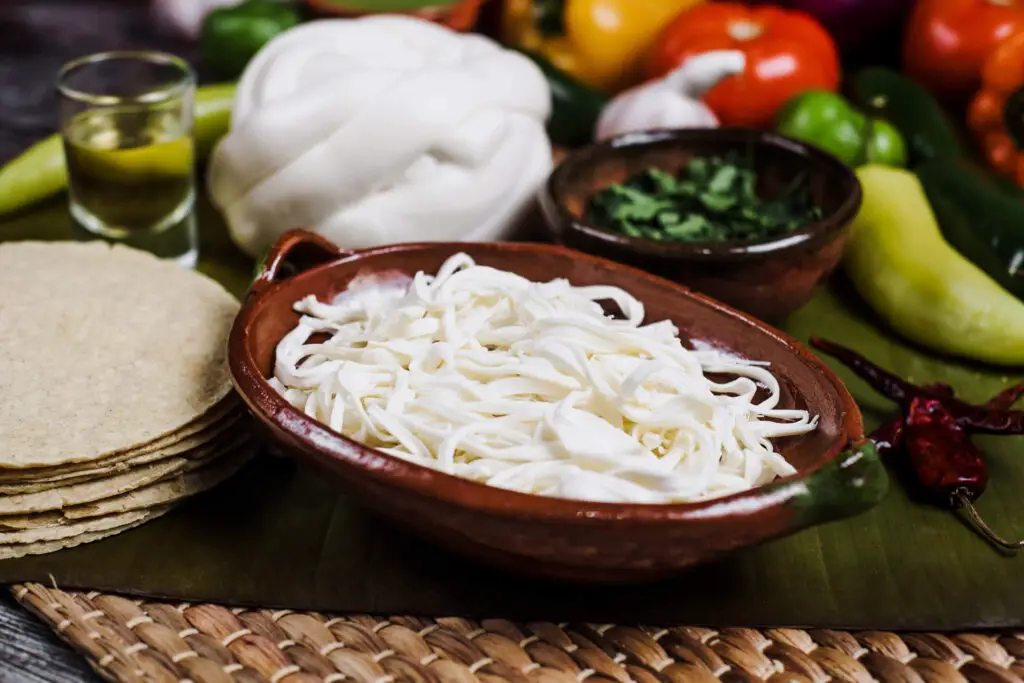
Open Curd
Open curd: During cheesemaking, curds are cut to a large size, resulting in more space between them as the cheese ages. This results in a crumbly texture.
Organic
Organic: Generally grown or raised without the use of pesticides, antibiotics or chemical fertilizers.
Panela Cheese
Panela cheese: Read our full article about Panela cheese here.
Pasta Filata
Pasta filata: An Italian term meaning “spun paste”. The words refer to the process by which such cheeses are made. The curds are warmed, kneaded, then pulled and stretched by hand or by machine, resulting in an elastic texture with a string-like quality. Oaxaca cheese is made using the Pasta Filata method.
Paste
Paste: The term used to describe the interior or “meat” of the cheese, below the rind. The texture of the paste can vary widely, from soft and buttery (fresh cheese) to firm and smooth (melting cheese) to hard and dry (aged cheese).
Pasteurization
Pasteurization: The process of heating milk in order to destroy any harmful micro-organisms. Pasteurized cheese is a cheese that is produced with milk that has been heated to a temperature of 161 F for fifteen seconds or to 145 F for thirty minutes or more. Pasteurization kills pathogens such as Listeria and E. coli (and others like Staphylococcus aureus and Salmonella) which can be present in raw milk. All cheese that is less than 60 days old, is required by United States law to be made only from pasteurized milk. This applies to domestically produced and imported cheese.
Pasty
Pasty: When the paste of a cheese is wet to touch, overly tacky or sticky. This may indicate a defect caused by low or no salt on the curd or unusual acid development.
PDO Protected Designation of Origen
PDO: Protected Designation of Origin. EU system to protect the production of certain foodstuffs.
Penicillium Candidum
Penicillium candidum: The white surface mold added to bloomy rind cheese. As these cheeses age, the mold will develop a rind that will soften from the outside inwards, thus creating an interior paste that becomes increasingly soft and runny.
Penicillium Roquforti
Penicillium roqueforti: The blue-green mold added to blue cheeses.
PGI Protected Geographical Indication
PGI: Protected Geographical Indication: EU system to protect the production of certain foodstuffs.
Pliant
Pliant: A texture descriptor meaning easily bent.
Pressing
Pressing: One of the steps in cheesemaking that uses pressure to achieve the desired moisture content, texture and shape.
Pressed Cheese
Pressed Cheese: Any cheese that is pressed after coagulation, cutting, and cooking (if applicable), draining of whey, and shaping of curds. Semisoft, firm and hard cheeses are all pressed to achieve a smooth, uniform paste, while most bloomy and blue cheeses are not pressed at all, hence their lighter, moister texture.
Quesillo
Quesillo: See also OAXACA CHEESE. Read our full article about Quesillo here.
Queso
Queso: The Spanish word for cheese.
Queso Blanco
Queso blanco: Read our full article about Queso blanco.
Queso Fresco
Queso fresco: Read our full article about Queso fresco.
Rancidity
Rancidity: Refers to a chemical reaction that transforms milk fats into free, fatty acids, causing a spoiled flavor.
Raw Milk Cheese
Raw Milk cheese: Any cheese made from milk that is not pasteurized. Cheese made from milk that prior to setting, has not been heated above the temperature of the milk at milking time or the body temperature of the animal at the time of milking. Cheeses made from raw milk are held for 60 days before being released to the public.
Rennet (Animal)
Rennet (animal): Animal rennet is an enzyme (rennin) extracted from the 4th stomach of an unweaned calf. It is used in the cheesemaking process to break down the milk proteins so that they will coagulate into curds.
Rennet (Vegetarian)
Rennet (vegetarian): Vegetable rennet is derived from plant sources such as artichoke, thistle and nettles as well as microbial rennet (an enzyme extracted from mold) can be used instead of animal rennet and is considered suitable for vegetarians. Also see TROMPILLO
Rennet Set
Rennet Set: Coagulating milk by using rennet.
Ricotta Salata
Ricotta Salata: A dry form of ricotta cheese. It is made from whey which is drained, pressed and left to dry for weeks or months.
Rind
Rind: This is the protective coating that allows the cheese to ripen safely. Rinds can be natural or artificial, thick or thin, hard or soft, washed, oiled, brushed or coated with wax.
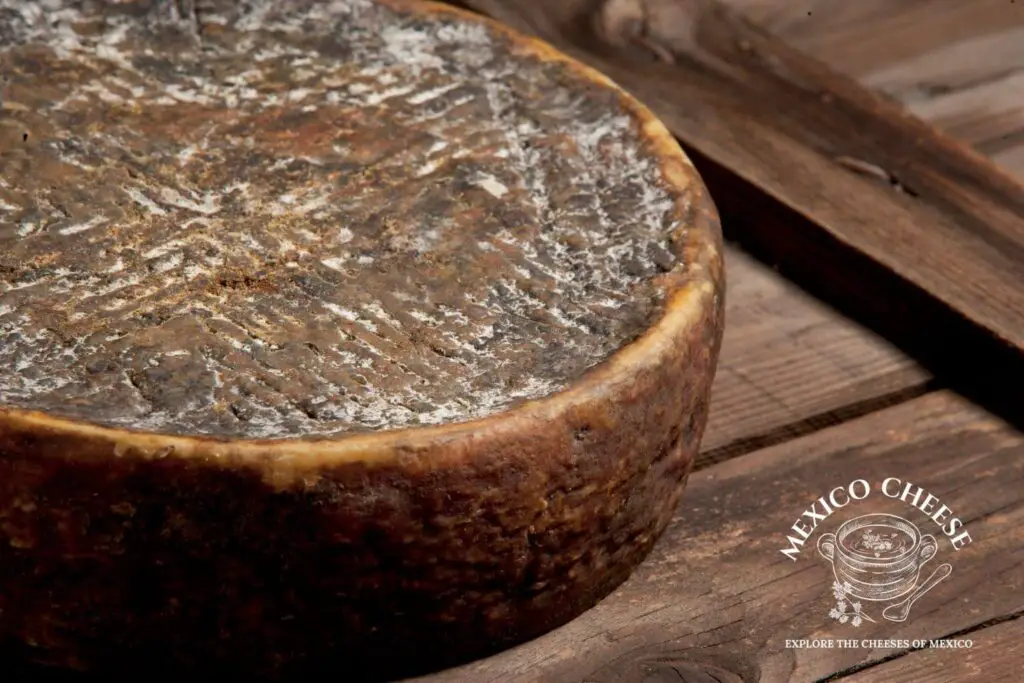
Ripe
Ripe: A cheese is considered ripe when it has reached its optimum flavor and is ready to be consumed.
Runny
Runny: A term that can be either a positive or negative characteristic of cheese. A Brie is ideally ripe when its interior paste has a soft, almost runny consistency. However, a cheese that has been improperly stored at the wrong temperature may become runny indicating that it is rancid and inedible.
Salting
Salting: The act of adding salt to the curd which draws off additional moisture, arrests the growth of bacteria and slows down acidity development. Salting signifies the end of draining whey and the beginning of the aging process. Salt can also be added through the brining process.
Scalding
Scalding: Heat treatment of the curd. The primary function of scalding is to shrink the curd and expel moisture.
Semi-Hard
Semi-hard: Cheese which has been typically aged 3 months to 2 years, with a moisture content of 40-50%. A good example is aged Cotija.
Semi-soft
Semi-soft: Cheese with a 50-75% moisture content, such as Mexican Manchego, and Queso Chihuahua.
Starter Culture
Starter culture: A preparation of bacteria that, when added to milk, consumes lactose and produces lactic acid. The resulting acidification is one of the preserving techniques used in cheese making.
Soft-Ripened
Soft-ripened: Cheeses which are are semi-soft and creamy in consistency.
Tangy
Tangy: A taste descriptor that indicates a mouth-watering acidity. Can describe flavors that are vinegary or citrussy in flavor.
TSG Traditional Specialties Guaranteed
TSG: Traditional Specialties Guaranteed – EU system of protection of production of certain foodstuffs.
Terroir
Terroir: Refers to all the components of the environment, geography, water and feed and their effect on milk and cheese.
Thermization or Thermalization
Thermization (thermalization): Heating milk to 135-145 F and holding at temperature for 15 to 30 seconds. This kills 95% of the bad bacteria without eliminating all of the good microflora. Milk that is heated in this manner is still considered unpasteurized (raw) by the US FDA.
Triple Cream
Triple Cream: The term for cheese that contains more than 72% butterfat in its dry matter. Triple cream cheeses are generally soft with a bloomy rind.
Trompillo (Solanum elaeagnifolium)
Trompillo, also known as Silverleaf Nightshade, is a plant native to Mexico. In the north of the country, the yellow berries of the Trompillo plant have been used for centuries as a coagulant in the manufacture of artisanal, filata-type Asadero cheese. This plant coagulant produces softer cheeses than those made with rennet. For this reason, the coagulant from Trompillo berries of could be used for the manufacture of soft cheeses such as cream cheese.
Turophile
Turophile: A cheese lover. Also known as a Caseophile.
Ultra Pasteurization
Ultra Pasteurization (UHT): The process of superheating milk to 275 degrees F for 4 to 15 seconds. Greatly extends shelf life but makes the milk generally unsuitable for cheesemaking. Most of the milk you see on the shelves in Mexican grocery stores is UHT.
Umami
Umami: A Japanese word to describe the 5th taste, after the well-known sweet, salty, sour and bitter. Umami would best be described as a savory taste, attributed to foods that are not easily classified into one of the 4 traditional taste groups.
US RDA
US RDA: United States Recommended Daily Allowance which refers to the nutrition in a food product.
Vegetarian Cheese
Vegetarian cheese: A cheese can be considered “vegetarian” if it is Lactic set, Acid set or made with non-animal derived rennet.
Washed Curd
Washed curd: Replacing an amount (often a third) of whey from the vat with water. Washing the curd helps to control acidity growth by reducing the amount of lactose and bacteria. Cheeses with a rubbery texture are often washed curd cheeses.
Washed Rind
Washed rind: Soft rind cheeses which have been rubbed and immersed in a solution of brine, wine, beer or grape brandy to bring about an exterior mold that causes the rind of the cheese to turn orange. The characteristic pronounced smell of Washed Rind cheeses is a result of the presence of this mold.
Whey
Whey: The liquid portion of milk which is drained off after the milk proteins, or casein, begins to coagulate and form curds. Whey contains water, lactose, and a variety of proteins that are not captured in the initial coagulation. Whey cheeses, such as Requeson, form a curd primarily under the influence of heat.
Yeast
Yeast: A single-celled microorganism fungi that can ferment carbohydrates into alcohol and carbon dioxide.
If you run across an unfamiliar cheese term and you can’t find it in the MexicoCheese.com Glossary, pop us a message using our Contact Form and we will be sure to add it to the list!
